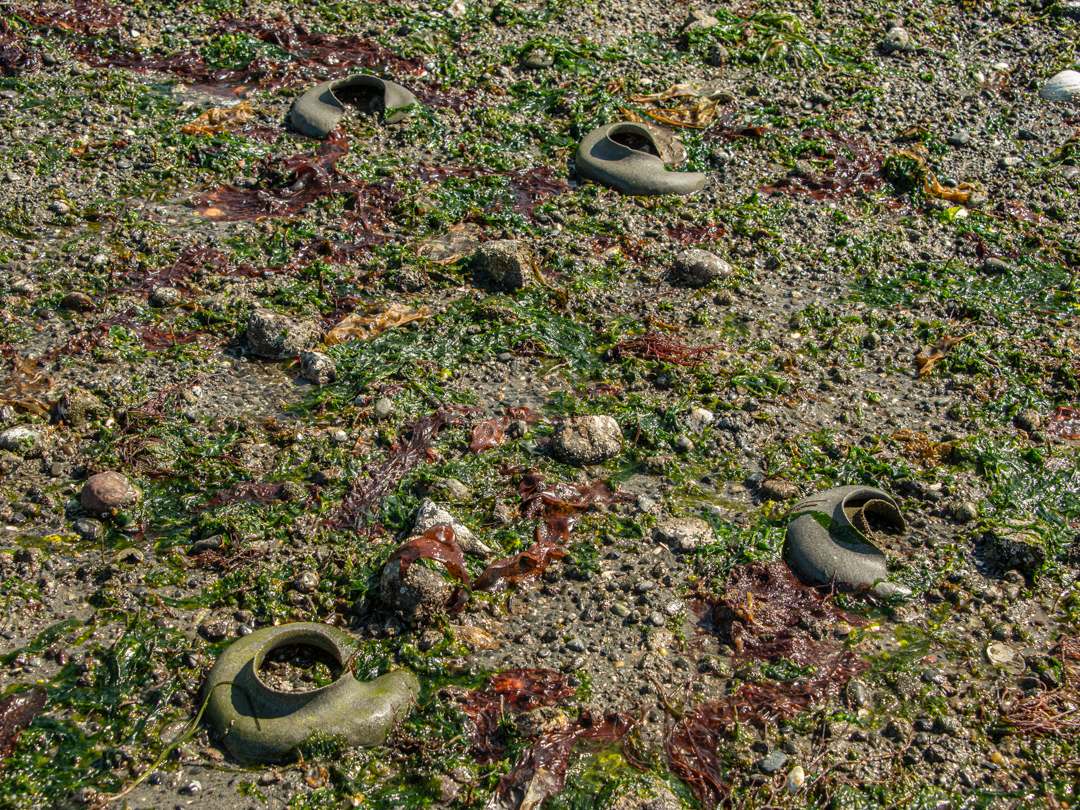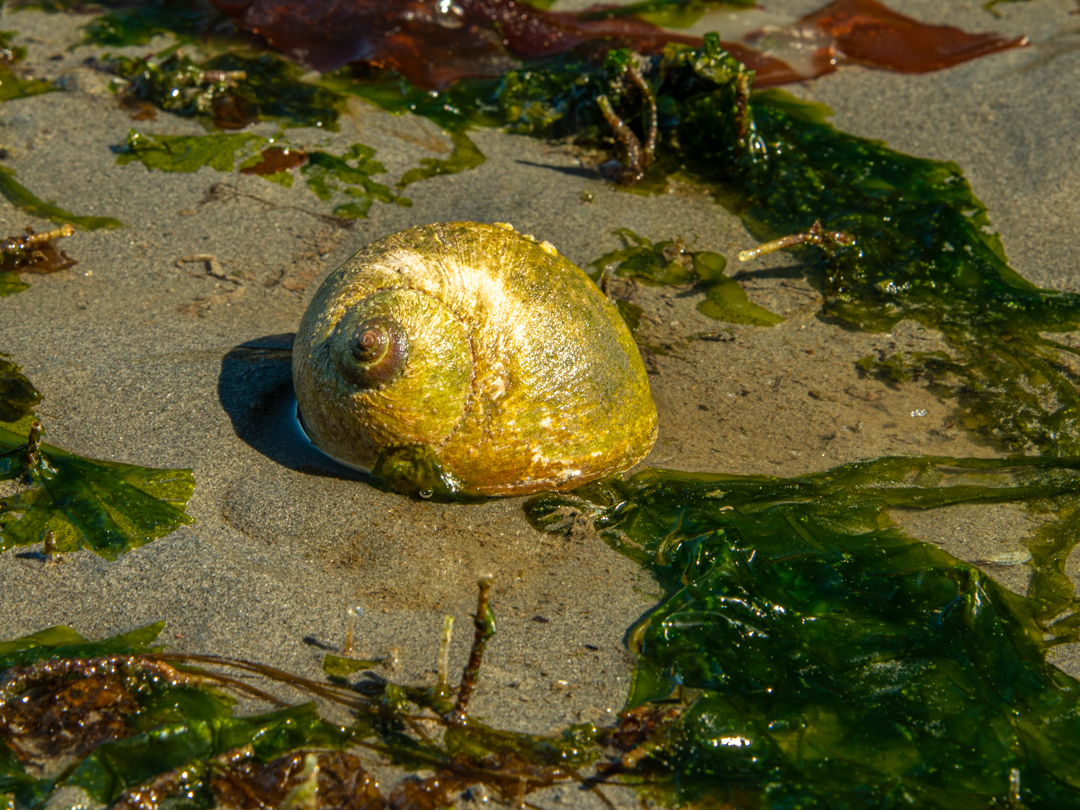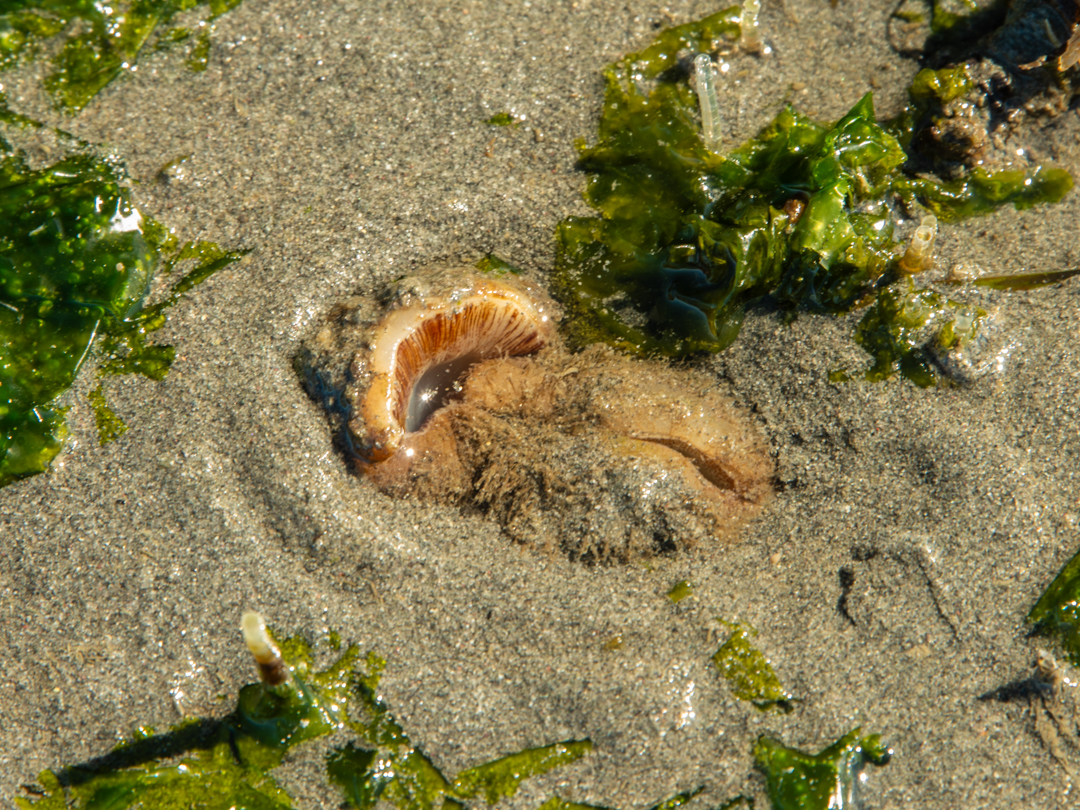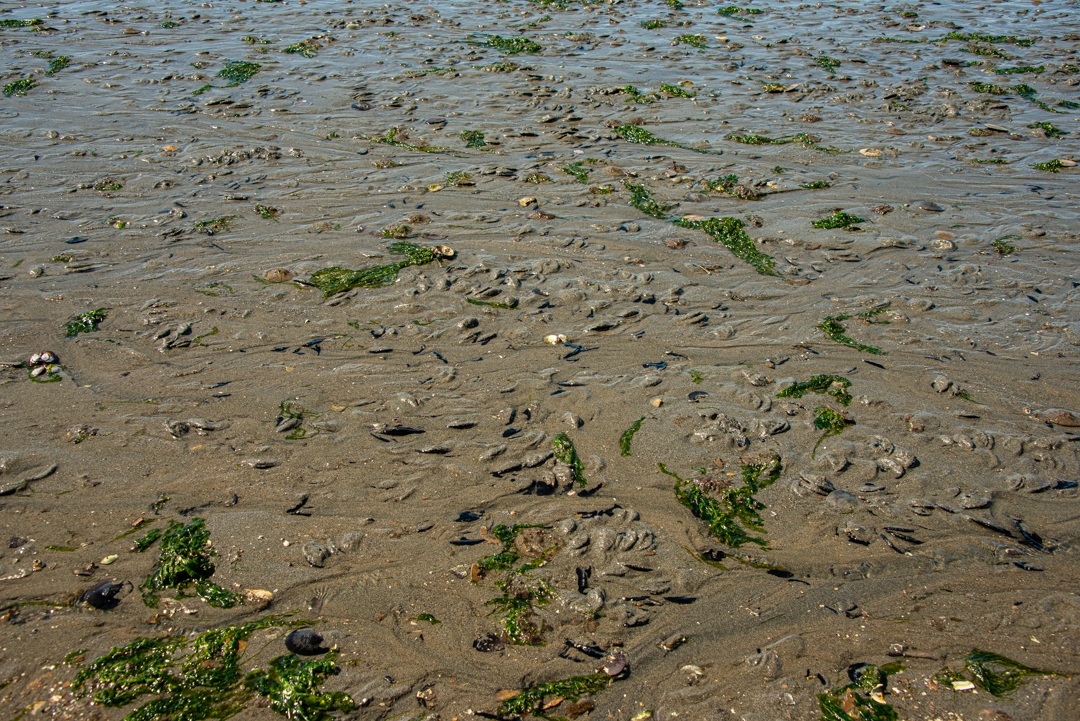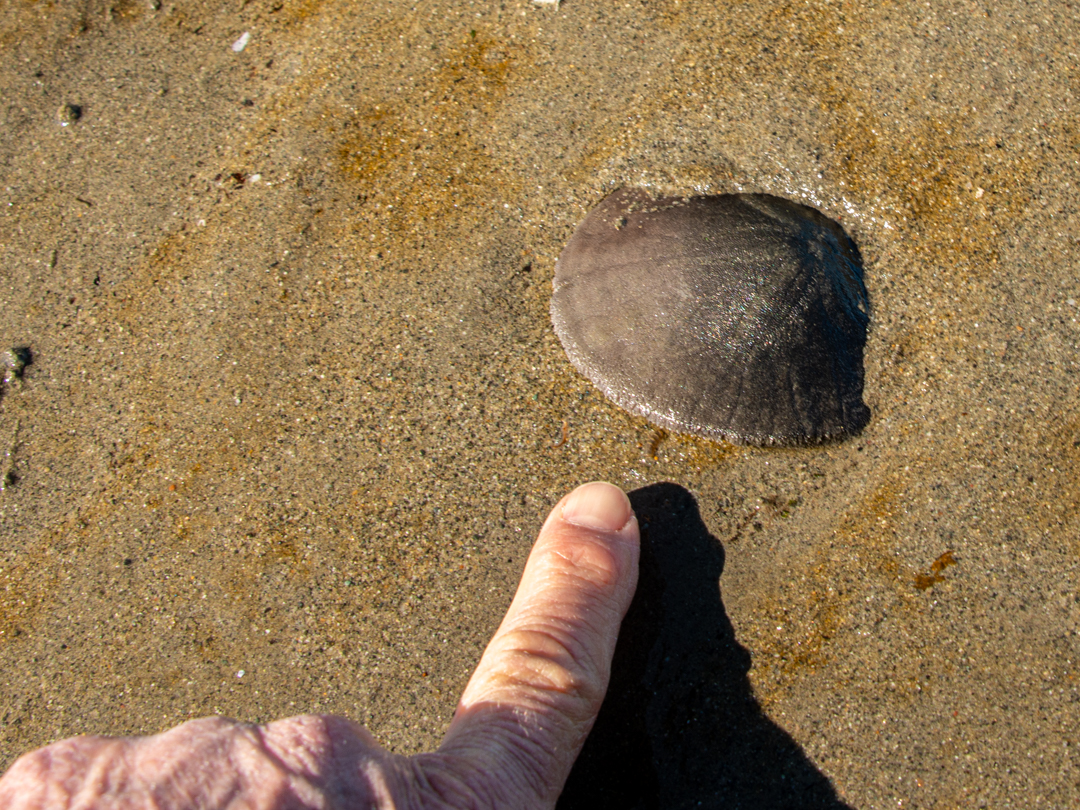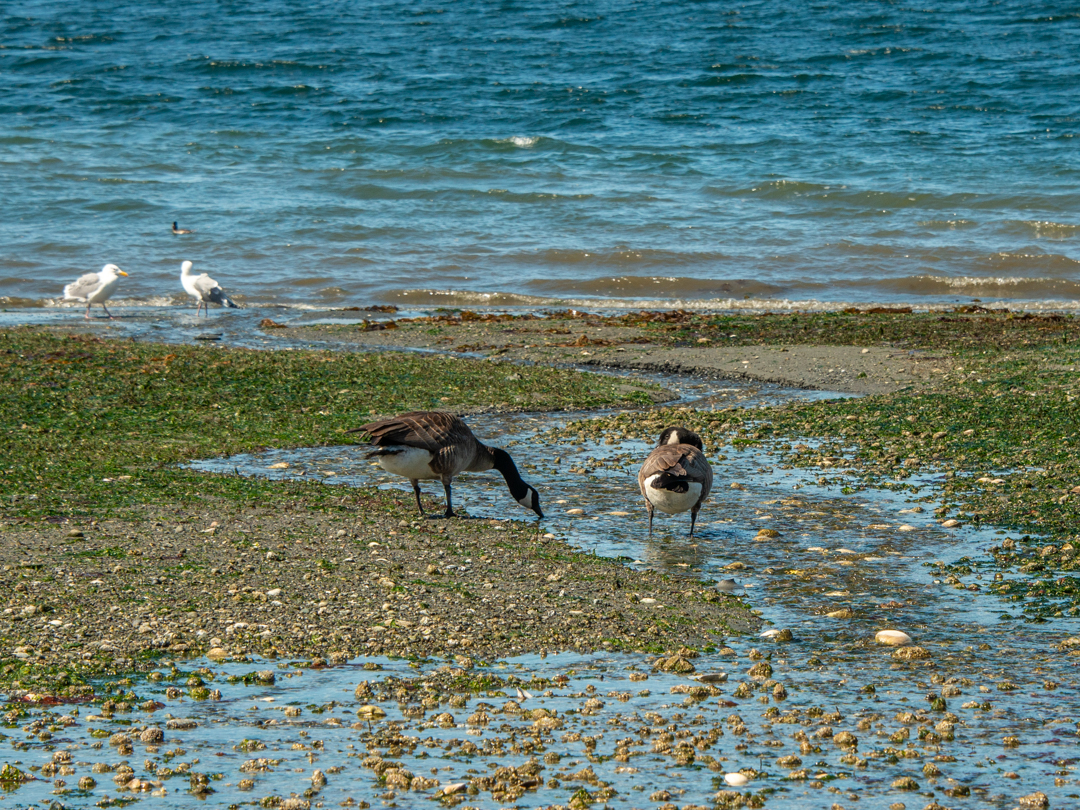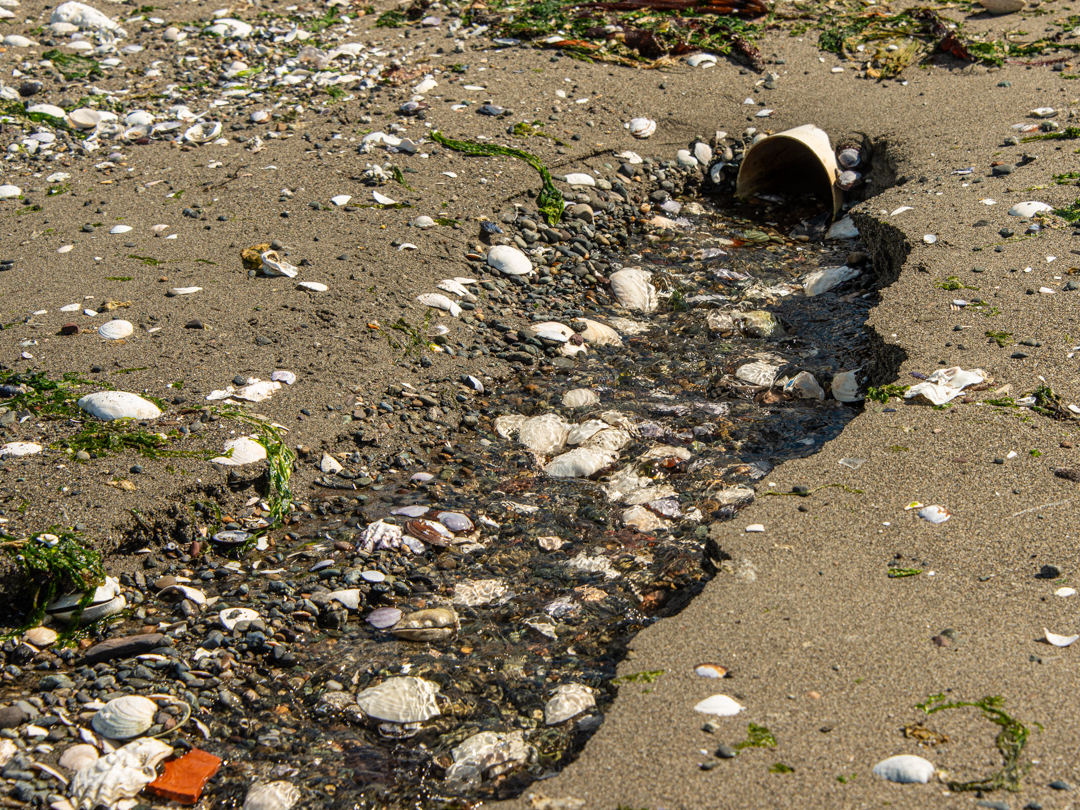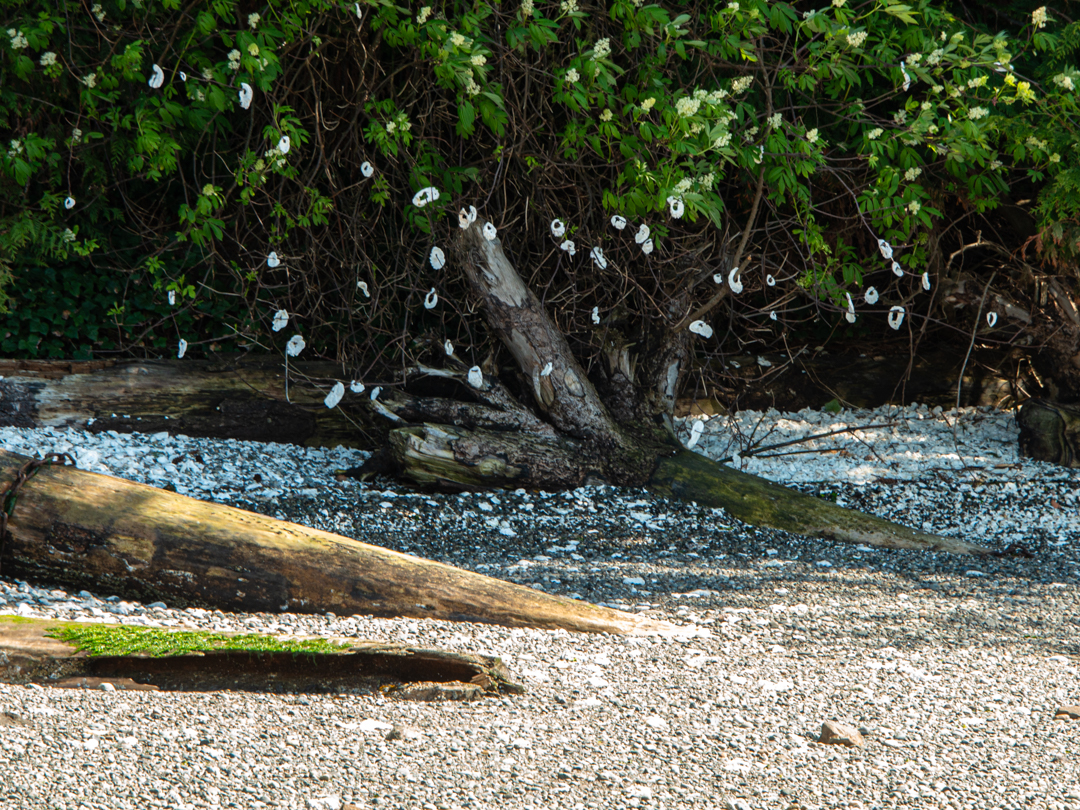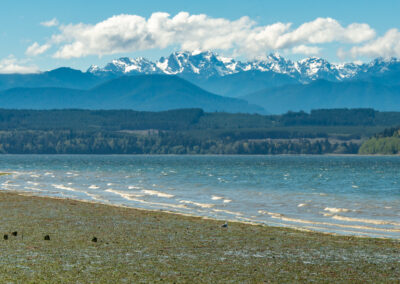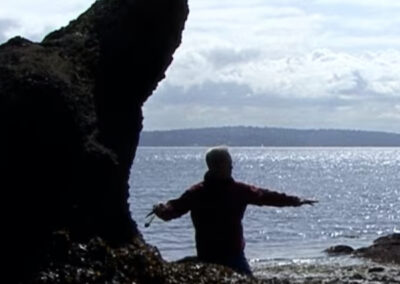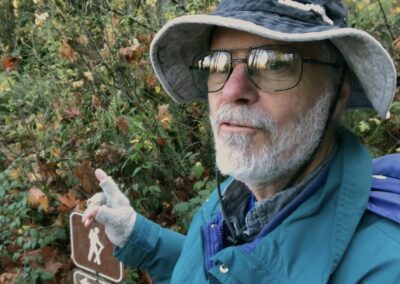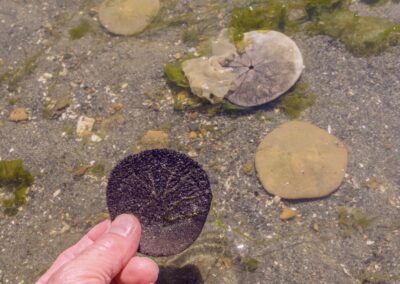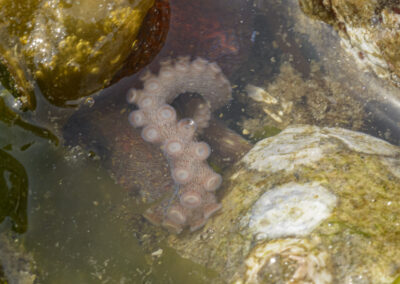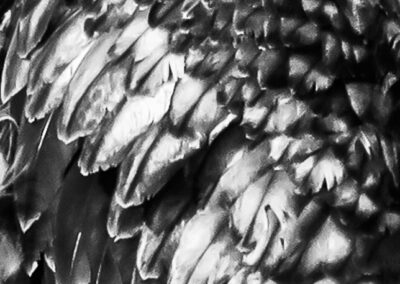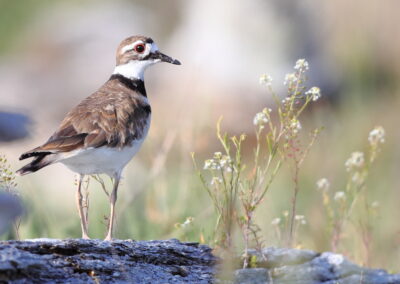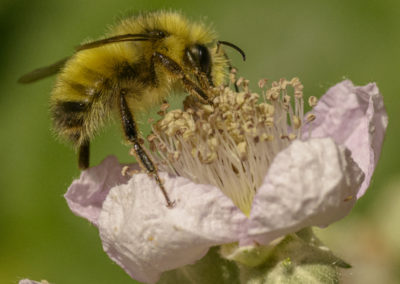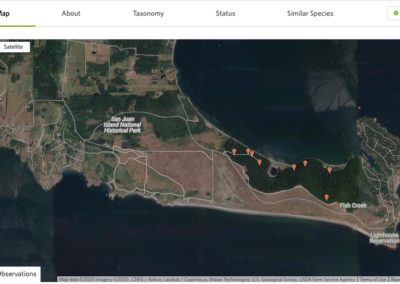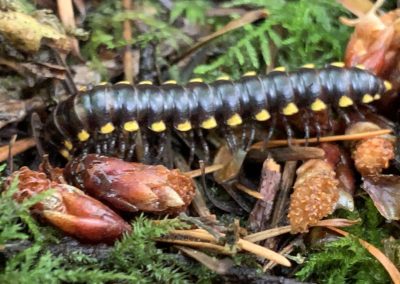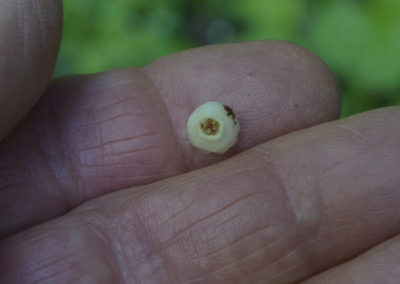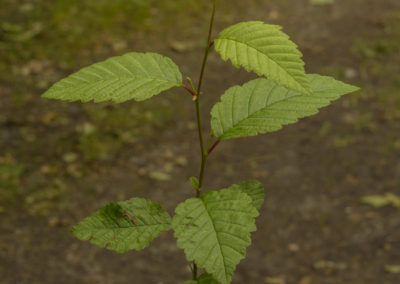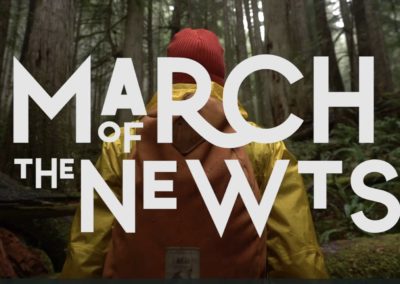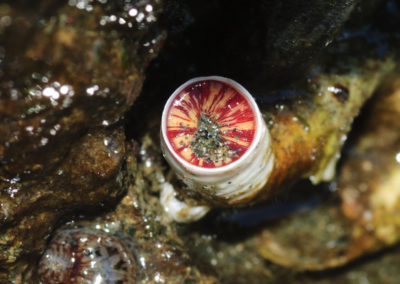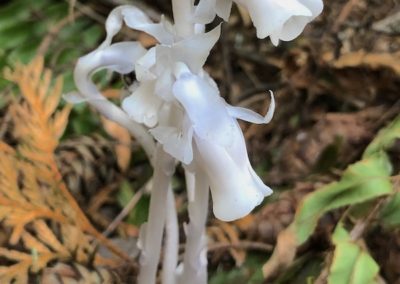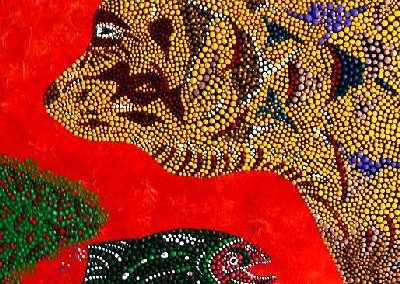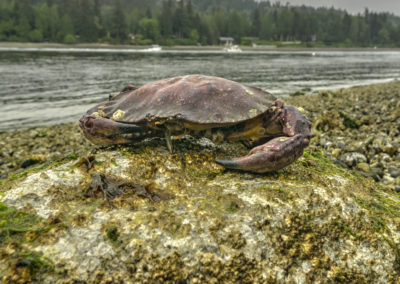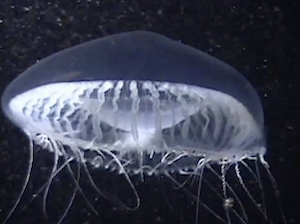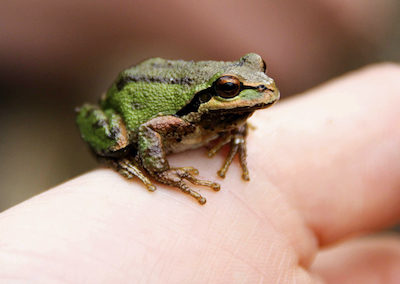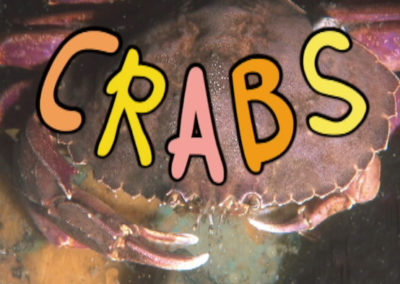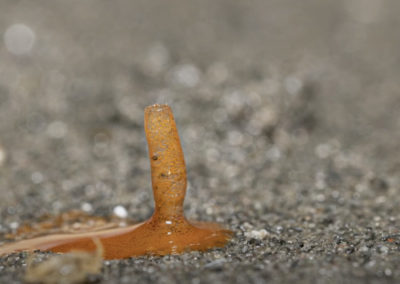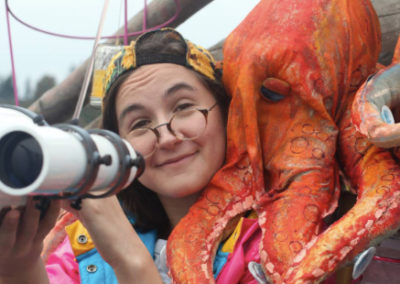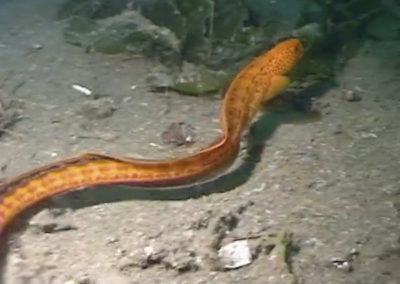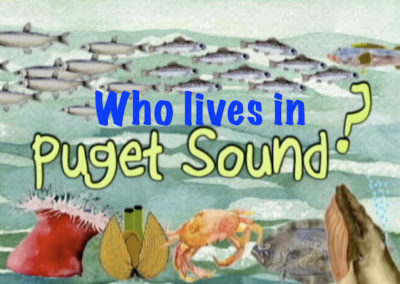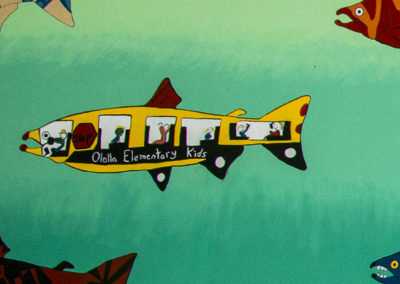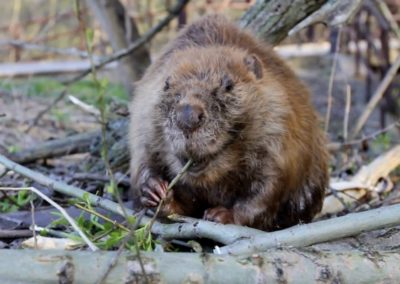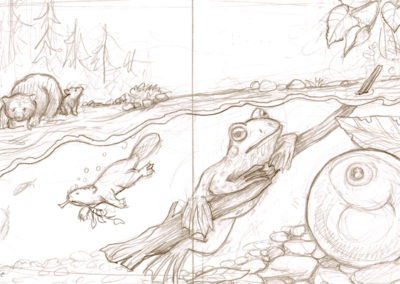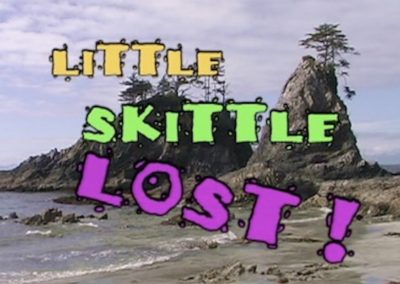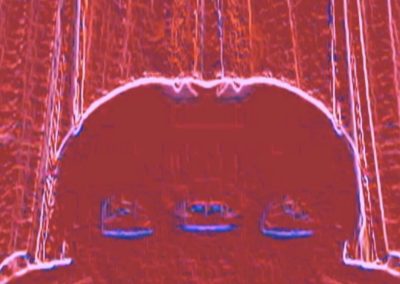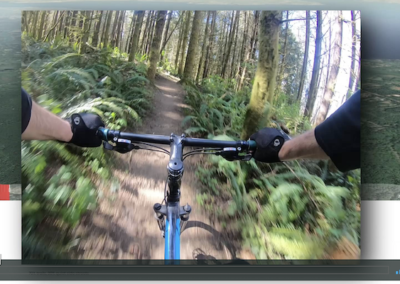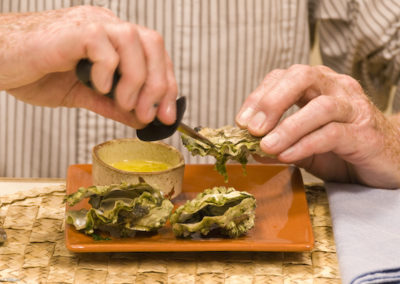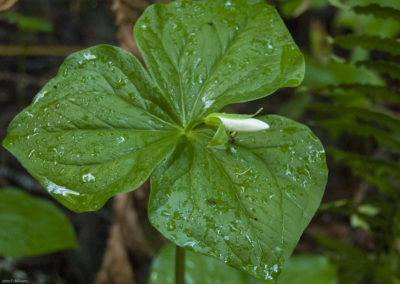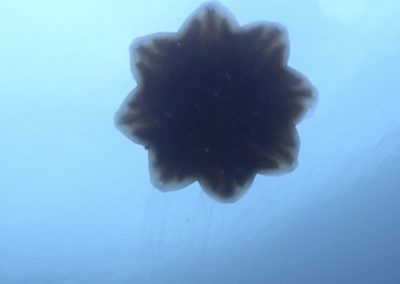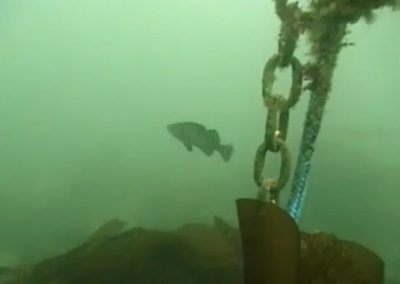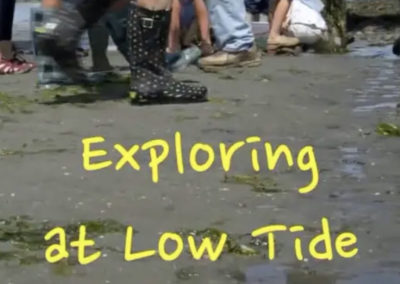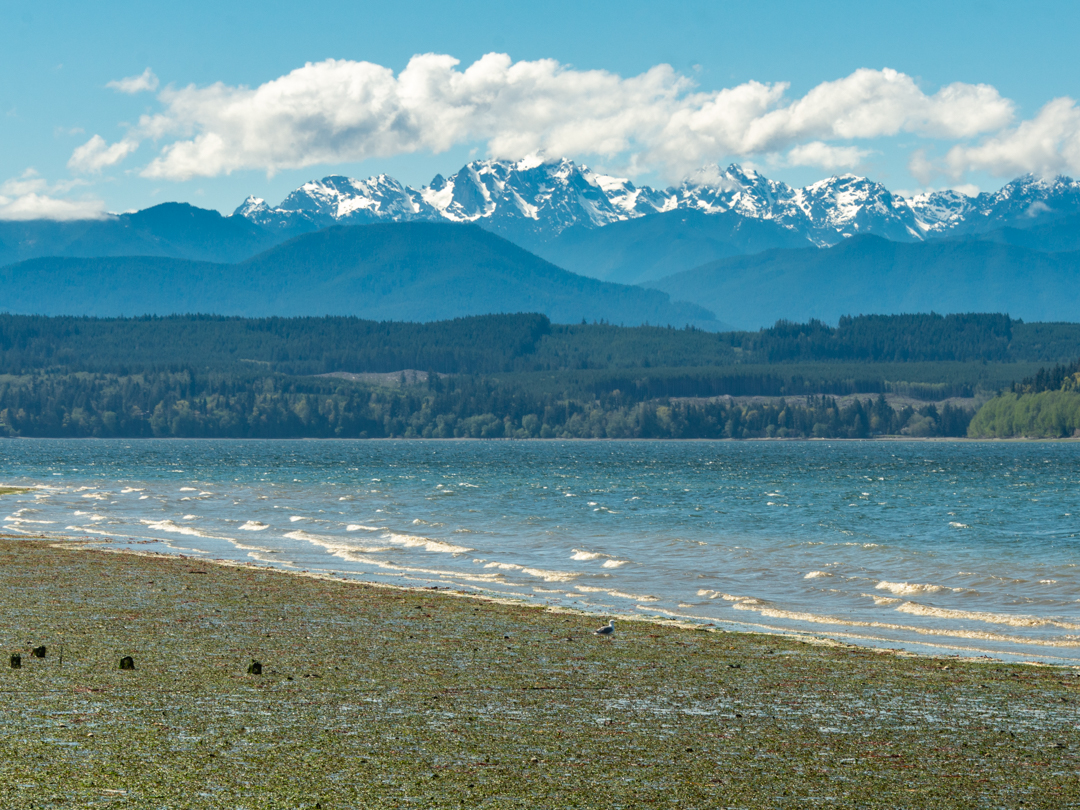
Low tide mid-april 2024
Text and photos by John F. Williams
It’s spring! I took a close look at some of the springtime activity on the beach at low tide.
It’s the time of year when moon snails are creating egg collars and leaving them on the beach. These are made up of tiny snail eggs sandwiched between layers of sand and mucus.

If you look into the middle of the egg collar below, the yellowish bit is the moon snail which is making it.
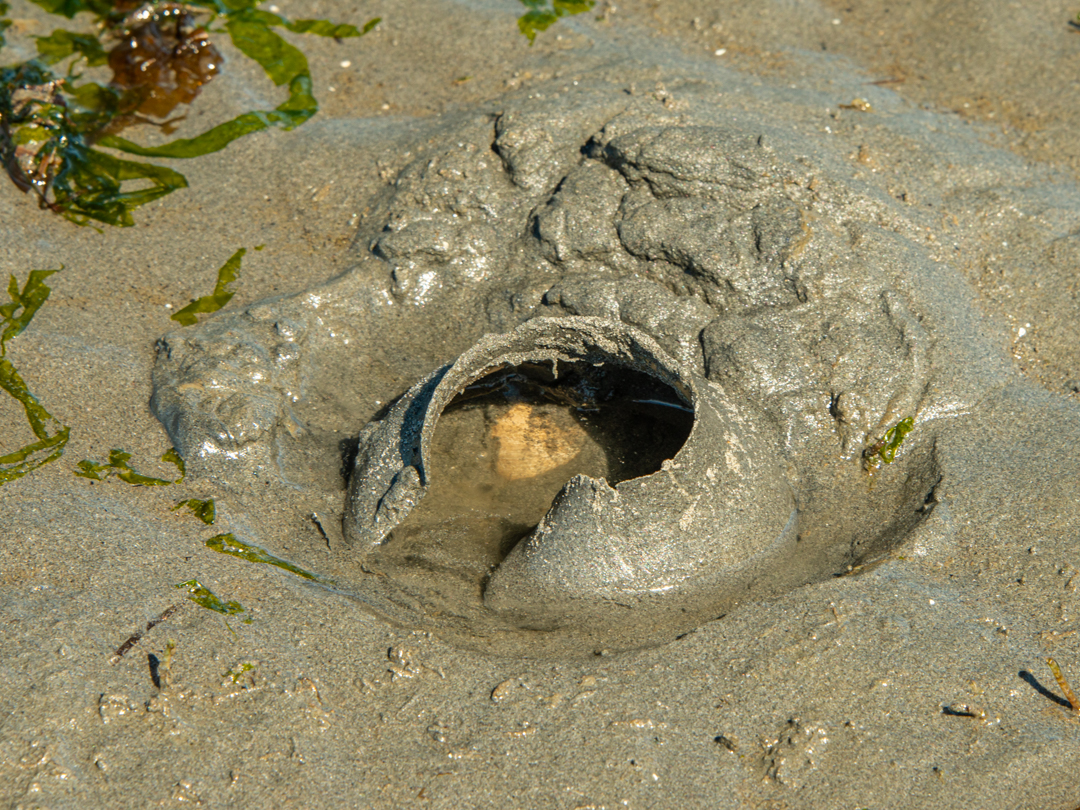
And what on earth is this pyramid-shaped thing?
One puzzling thing that I saw were some small pyramids of sea-lettuce (ulva).
In some cases there was a small rock inside which caused that shape. However, many of the pyramids I found were empty. What caused that shape?
I did notice a few clam siphons peeking out of the sand. But they noticed me before I noticed them, so they shrunk back into the sand before I got a chance to photograph the siphons sticking up into the air. That made me wonder if maybe those pyramids had been created as sea lettuce washed up against extended clam siphons.
At first glance, it wasn’t clear what was the cause of all of this disturbance in the sand. Looking more closely, I could see that the disturbances were sand dollars.
I also found some patches of young, small sand dollars. The large one in the left photo below was almost three inches across. The small one in the photo on the right was about the size of a quarter.
 See more about the Life of a Baby Sand Dollar from the Monterey Bay Aquarium
See more about the Life of a Baby Sand Dollar from the Monterey Bay Aquarium
In some of the beds, the sand dollars were less buried — the shapes of the dollars themselves were easier to see.
Some of the beds were also quite extensive, stretching from the water line almost to the wrack line, and extending a dozen yards or more along the beach.
I made a point to find my way around the beds without walking through them, to avoid crushing sand dollars as I walked.
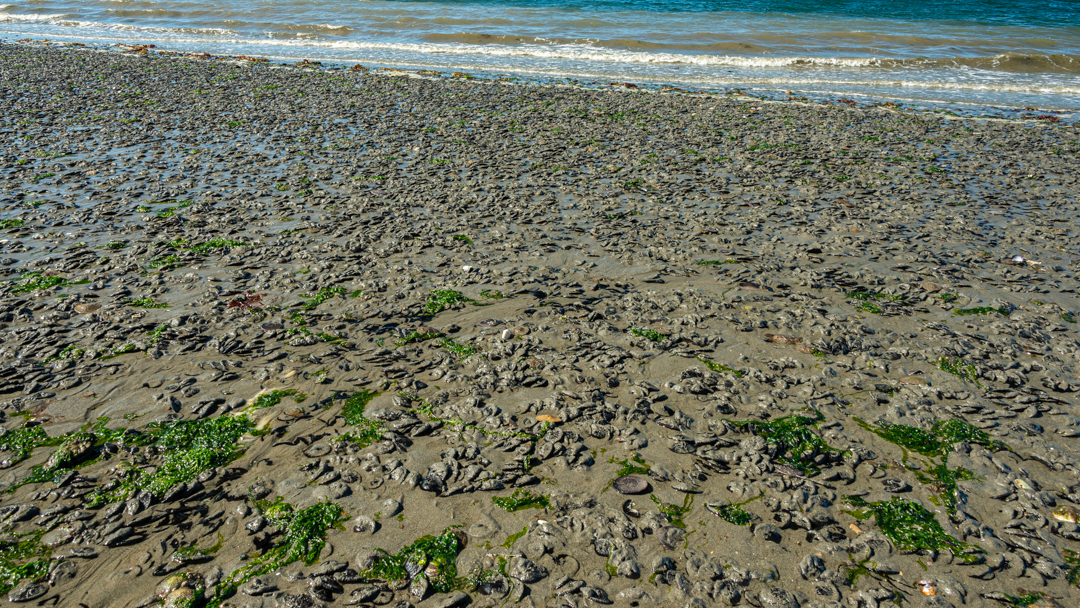
I also saw some Canada geese hanging out, sipping fresh water as it flowed down the beach. It was a good reminder that unhealthy stuff we allow into our stormwater doesn’t just magically disappear, it becomes a part of our ecosystem.
On a few beaches I’ve seen trees decorated with shells.
Oysters are not uncommon on some beaches. This is not a native Olympia oyster, but a large non-native Pacific oyster.
That’s it for this trip to the beach. That was quite a lot to see in just one short walk! It’s still early spring, and it was a bit breezy. But I really enjoyed being out in the sunshine — and we have so many wonderful beaches in this region that it’s always a pleasure to explore a new one, or re-visit a familiar one.
See More virtual tours
SOME OTHER ESPECIALLY INTERESTING RESOURCES
Science and Nature
This series of short videos, "Human Elements, Science and Nature," is on our local PBS station (KCTS9) as well as online. It features some great local science stories and amazing imagery.
https://www.kcts9.org/show/human-elements/episodes
Future Ecologies
I was thrilled when I discovered the “Future Ecologies” podcast because it has an uncanny resemblance to what we set out to do with Salish Magazine (except that it’s audio rather than visual).
It is one of the few media efforts which really embraces the ecosystem perspective. Use this link to take a look at the review of Future Ecologies on our SEA-Media web site.
The Marine Detective
Jackie Hildering invites you to her blog: "Join me in the cold, dark, life-sustaining NE Pacific Ocean to discover the great beauty, mystery and fragility hidden there." But even before you get to the blog, on her home page there is a slideshow of absolutely stunning photographs.
Street Smart Naturalist
Street Smart Naturalist: Explorations of the Urban Kind is a weekly blog written by David B. Williams to share observations about the human and natural world around Seattle, Puget Sound, and the Pacific Northwest.
Are you in the target audience?
- People who want to know more about Seattle and Puget Sound and the many fascinating stories that can be found by wandering the streets, deep diving newspaper archives, perusing old photos, and taking the time to slow down, be more observant, and ask questions;
- Urban naturalists who delight in noticing fossils in buildings, walruses in terra cotta, and ants bubbling out of sidewalk cracks;
- Flaneurs, historians, optimists, and the just plain nerdy;
- And, those who simply look around and find beauty and amazement in the world around them.
Encyclopedia of Puget Sound
The Encyclopedia of Puget Sound is a comprehensive guide to the science of Salish Sea ecosystem recovery. Articles on this site describe the region's major environmental threats and areas of concern, but also the facts and stories that make the Salish Sea an estuary of international importance. The website is a product of the University of Washington Puget Sound Institute and receives major support from the Environmental Protection Agency's National Estuary Program.
Hakai Magazine
Hakai Magazine explores science, society, and the environment from a coastal perspective. Not only is its content instructive, but it's presentation is visually inspiring.
Living on Earth
Public Radio's Environmental News Magazine. If you're looking for some substance beyond the normal focus of our media on sports, politics, fashion, and economy, listen to this show which does a great job of portraying earth ecosystems as something essential to our lives. The stories it tells are compelling.
IslandWood's Phenology Friday
For 12 weeks in 2020, one of IslandWood’s educators shared a phenological highlight. Watch the videos of their explorations.
Pacific Wonder Tracker
Pacific Wonder Tracker celebrates the delicious sense of wonder we experience when exposed to the natural environment. It is also specific to the natural wonders of the Pacific Northwest. Whether you live here, plan to visit, or just have a curious mental itch, you can enjoy reading about wonders you may encounter in coastal Washington and Oregon.
"Scientists on the Go" from WET Science Center
WET Science Center's "Scientists on the Go" activities integrate science into a child's day while incorporating reading, writing, and math skills! There are a combination of indoor and outdoor activities to keep the learner curious and asking questions. Check back regularly for updated science activities and new printable activity packets. Recommended for elementary age children.
Remote Science Learning
Use this guide to find science resources to supplement remote learning. Thurston County environmental organizations have developed activities for all ages. This resource is provided by the Thurston County ECO Network.
Deep Look
This collection of short videos by PBS shows the unseen at the very edge of our visible world. Get a new perspective on our place in the universe and meet extraordinary new friends. Explore big scientific mysteries by going incredibly small.
PLEASE HELP SUPPORT
SALISH MAGAZINE
DONATE
Salish Magazine contains no advertising and is free. Your donation is one big way you can help us inspire people with stories about things that they can see outdoors in our Salish Sea region.
We also don't advertise Salish Magazine, so please spread the word of this online resource to your friends and colleagues.
Thanks so much for your interest and your support.
We also don't advertise Salish Magazine, so please spread the word of this online resource to your friends and colleagues.
Thanks so much for your interest and your support.

